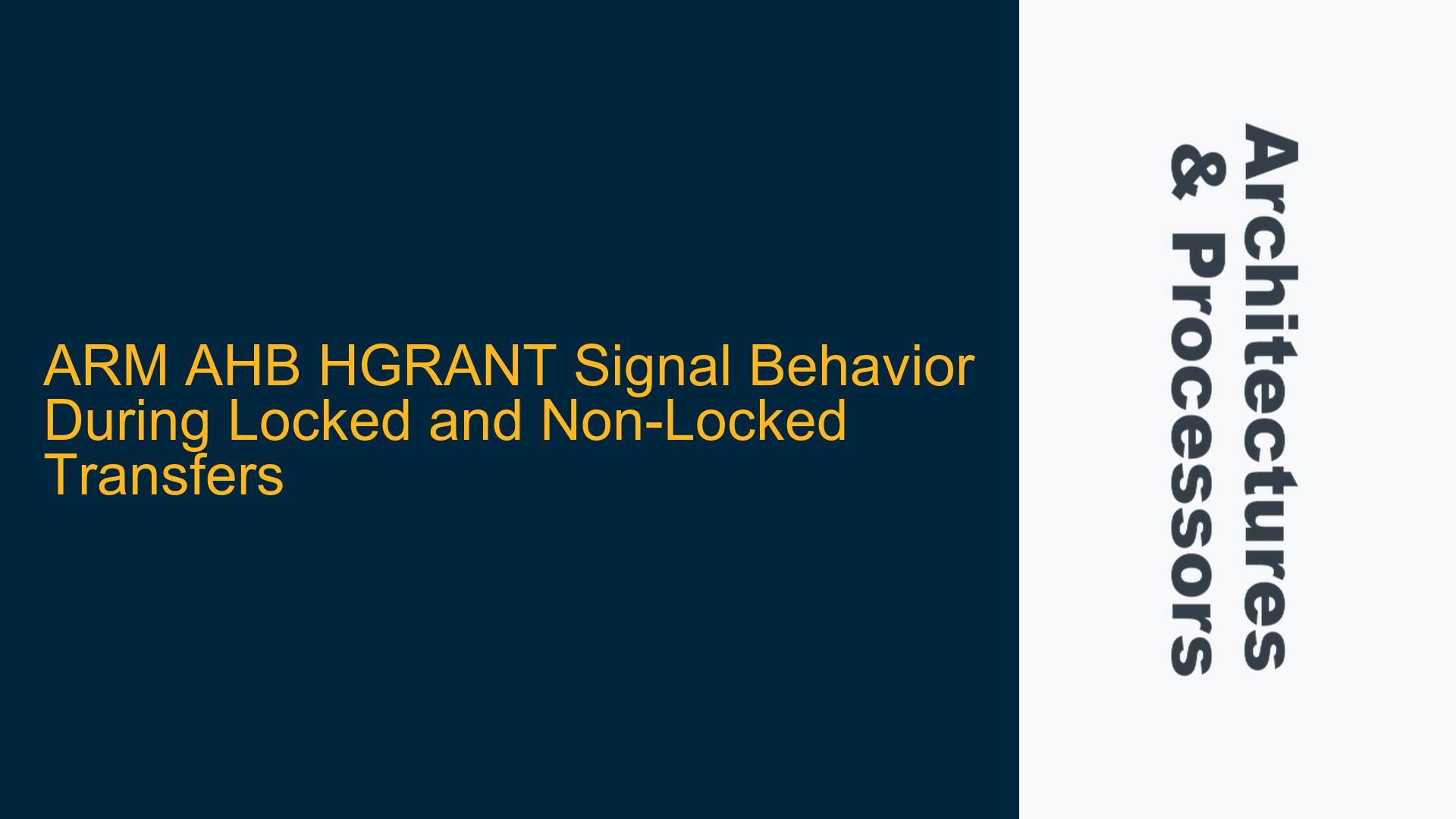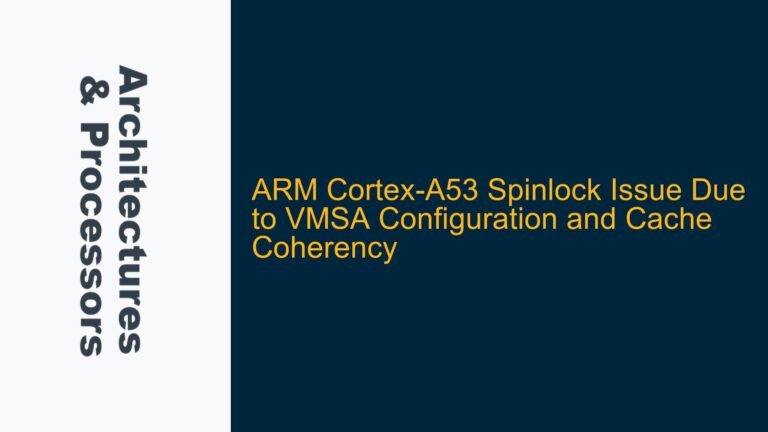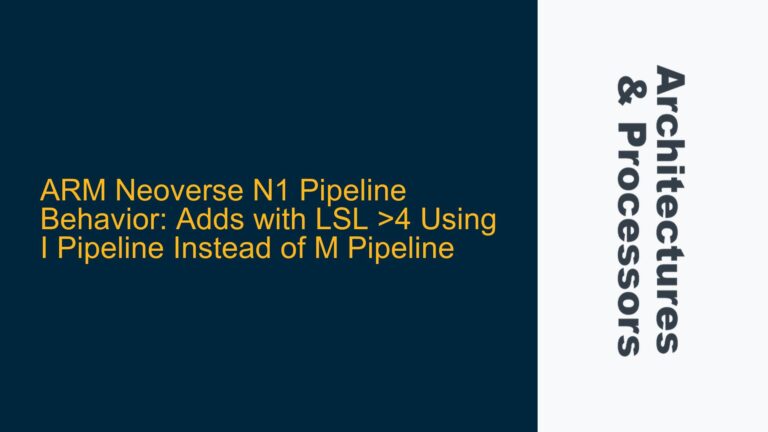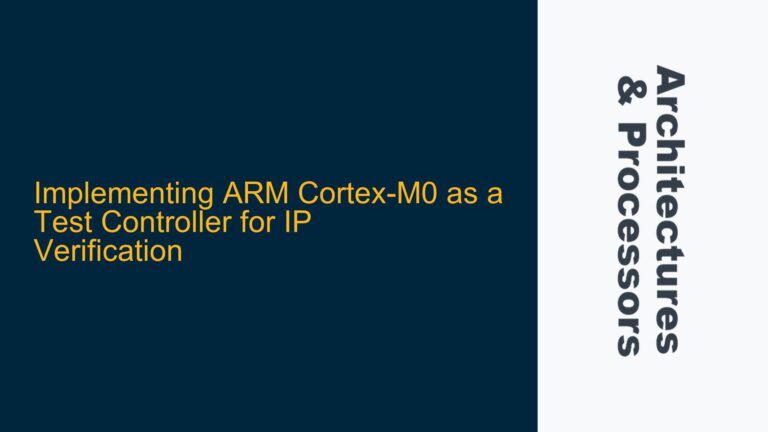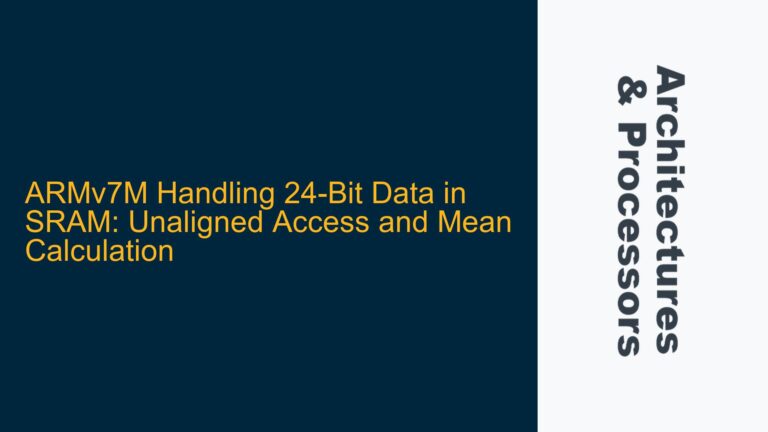HGRANT Signal Deassertion Timing in Non-Locked and Locked Transfers
The HGRANT signal in the ARM Advanced High-performance Bus (AHB) protocol plays a critical role in bus arbitration, determining which master gains access to the bus at any given time. The behavior of HGRANT during both non-locked and locked transfers is governed by specific rules in the AHB protocol, which ensure proper bus utilization and data integrity. Understanding these rules is essential for designing efficient and reliable bus arbitration mechanisms.
In non-locked transfers, the arbiter can deassert HGRANT for a master under certain conditions. For instance, when another master requests bus access, the arbiter evaluates the granting algorithm (e.g., priority-based or round-robin) and may deassert HGRANT for the current master to grant access to the requesting master. This is straightforward in cases where the current master is not engaged in a burst transfer. However, during a fixed-length burst transfer, the arbiter typically deasserts HGRANT when the penultimate address of the burst is sampled. This ensures that the current master completes its burst transfer without interruption, maintaining bus efficiency.
For locked transfers, the arbiter’s ability to deassert HGRANT is restricted. Locked transfers are used to ensure atomicity in multi-master systems, where a sequence of transfers must complete without interruption. During a locked transfer, the arbiter cannot deassert HGRANT until the entire locked sequence is complete. This includes both fixed-length and undefined-length bursts. The HLOCK signal, rather than the burst type, dictates the arbiter’s behavior. The arbiter must ensure that the master retains bus access until the final transfer of the locked sequence is complete, even if this requires granting an additional IDLE transfer to maintain bus integrity.
Arbiter Behavior During Undefined-Length Bursts and SPLIT Responses
Undefined-length bursts and SPLIT responses introduce additional complexity to the arbiter’s handling of the HGRANT signal. Undefined-length bursts do not have a predetermined number of transfers, making it challenging for the arbiter to predict when the burst will end. In such cases, the arbiter must rely on the HLOCK signal to determine when it can safely deassert HGRANT. This is consistent with the handling of fixed-length bursts, where the HLOCK signal takes precedence over the burst type.
SPLIT responses further complicate the arbiter’s task. A SPLIT response indicates that a slave is temporarily unable to complete a transfer and requests the arbiter to grant the bus to another master. During a locked transfer, if a SPLIT response is received, the arbiter must deassert HGRANT for the current master and grant the bus to a "dummy master." This dummy master performs IDLE transfers until the original master can be regranted to complete the locked sequence. This mechanism ensures that the locked sequence is not prematurely terminated, preserving atomicity while allowing other masters to utilize the bus.
Implementing Efficient HGRANT Management for AHB Arbitration
To implement efficient HGRANT management in AHB arbitration, designers must consider several factors. First, the arbiter must accurately monitor the HTRANS and HREADY signals to detect the end of a burst transfer. This is particularly important for fixed-length bursts, where the arbiter can optimize bus utilization by allowing the burst to complete before deasserting HGRANT. Implementing a counter to track the number of transfers in a fixed-length burst can help the arbiter make informed decisions about when to deassert HGRANT.
For locked transfers, the arbiter must prioritize the HLOCK signal over other considerations. This includes ensuring that the master retains bus access until the final transfer of the locked sequence is complete, even if this requires granting an additional IDLE transfer. Designers should also implement mechanisms to handle SPLIT responses during locked transfers, ensuring that the arbiter can switch to a dummy master without disrupting the locked sequence.
In cases where undefined-length bursts are used, the arbiter must rely on the HLOCK signal to determine when it can safely deassert HGRANT. This requires careful monitoring of the HLOCK signal and coordination with the master to ensure that the burst is not interrupted prematurely. Additionally, designers should consider the impact of bus latency and arbitration overhead on system performance, particularly in systems with multiple masters competing for bus access.
By carefully considering these factors and implementing robust arbitration mechanisms, designers can ensure efficient and reliable bus utilization in ARM AHB-based systems. This includes optimizing the timing of HGRANT deassertion, handling locked transfers and SPLIT responses, and monitoring burst transfers to maintain system performance and data integrity.
